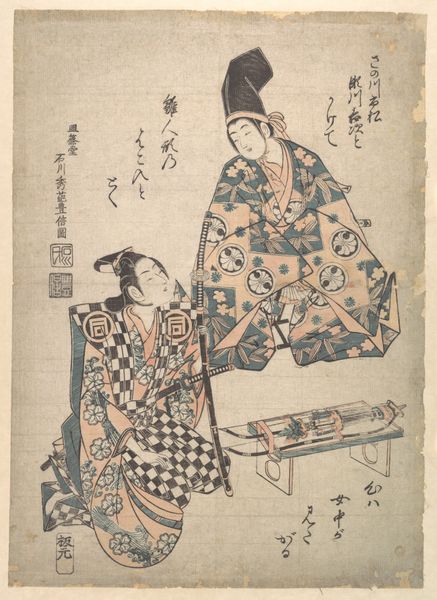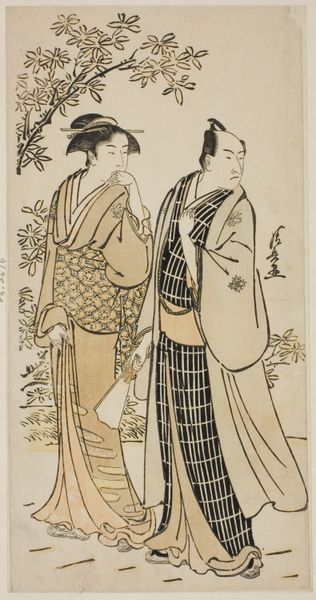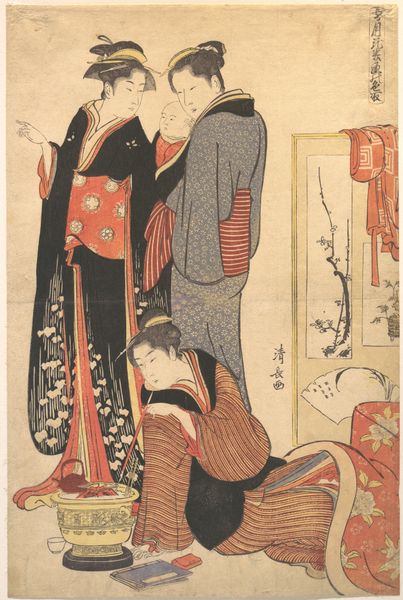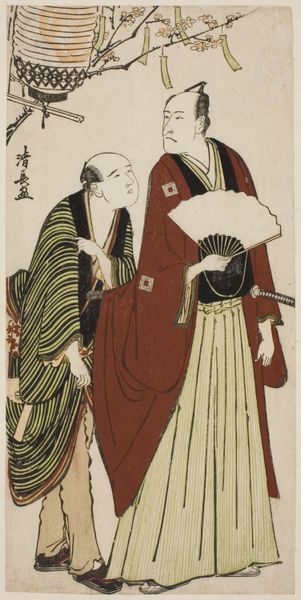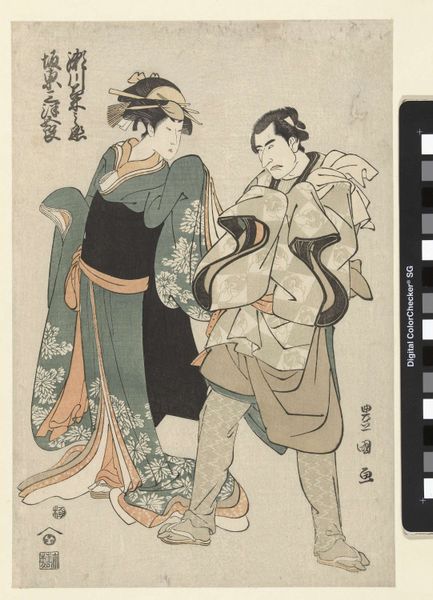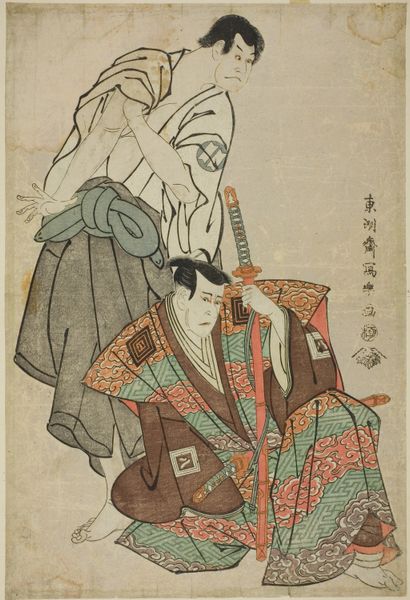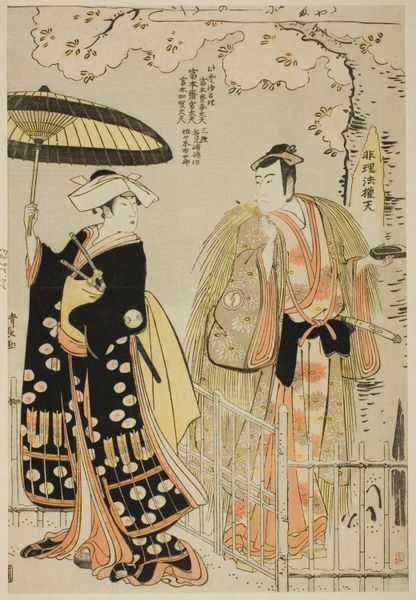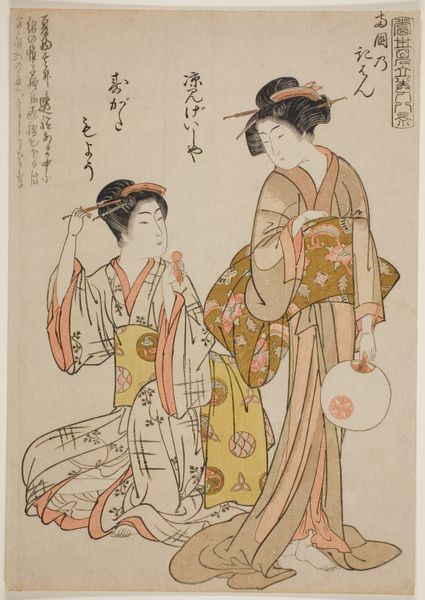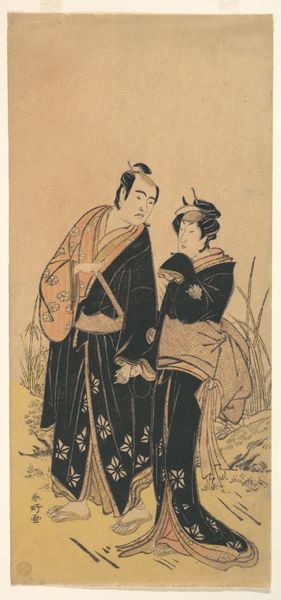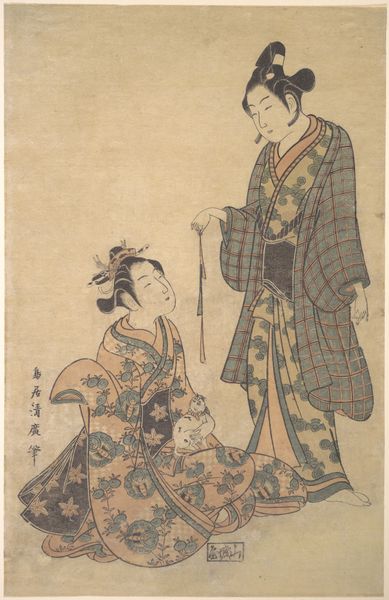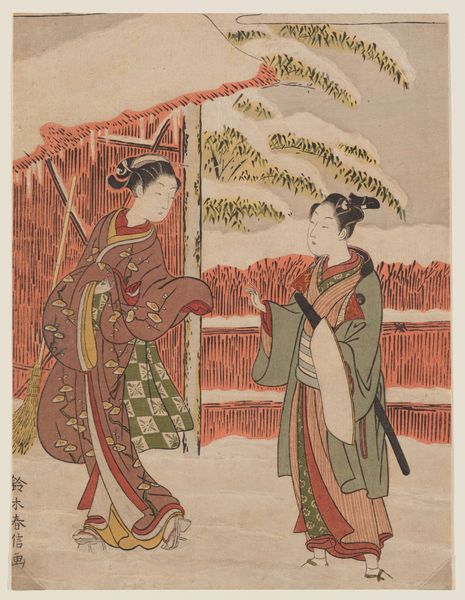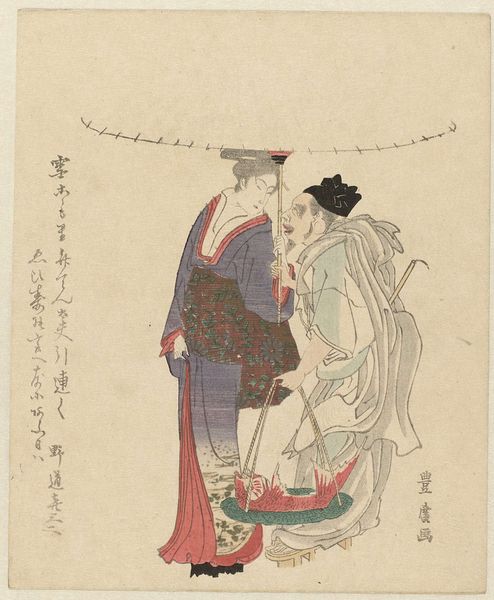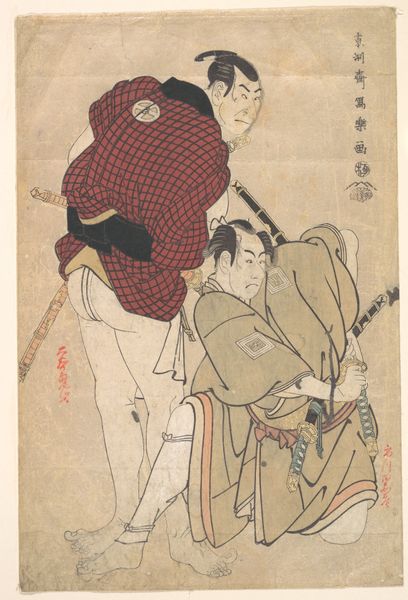
Dimensions: height 376 mm, width 256 mm
Copyright: Rijks Museum: Open Domain
Curator: The figures seem almost suspended in time. What strikes you about this particular print? Editor: The stillness, perhaps. The two figures seem poised and controlled. It has an otherworldly feel. Let me provide some background, this ukiyo-e print, titled “Acteurs uit het Noh theaterstuk Tomonaga”, crafted in 1926 by Tsukioka Kogyo. It's currently held here at the Rijksmuseum. Curator: Ukiyo-e really flourished during a period of significant social and economic change in Japan. To me, the subjects of Tsukioka’s artworks provide insights into Japanese theatre culture, societal norms, and gender roles. Editor: Indeed. The Noh theatre had very specific, gendered performance codes. Curator: Absolutely, the characters in this piece can’t be divorced from the symbolism of theatrical performance itself, from gender representations and broader societal anxieties. Were they confined by those performance constraints? Did those restraints shape identity both on- and off-stage? Editor: These images helped popularize the plays. It created a visual culture surrounding the theater. Without the prints that shaped popular perception and created a broad audience beyond the elites, would this important dramatic art even endure in this way? Curator: A thought-provoking point about its influence on enduring popularity and access. What an opportunity it represents for us to rethink accessibility. Editor: Exactly. It's fascinating how a medium like printmaking, originally a method of disseminating cultural capital, also democratizes and redefines those power structures. Curator: It certainly makes you ponder about power and performance, in the theater and elsewhere. Editor: The power dynamics here are compelling. A piece about actors, shaped by cultural forces that shape representation itself. Food for thought!
Comments
No comments
Be the first to comment and join the conversation on the ultimate creative platform.

